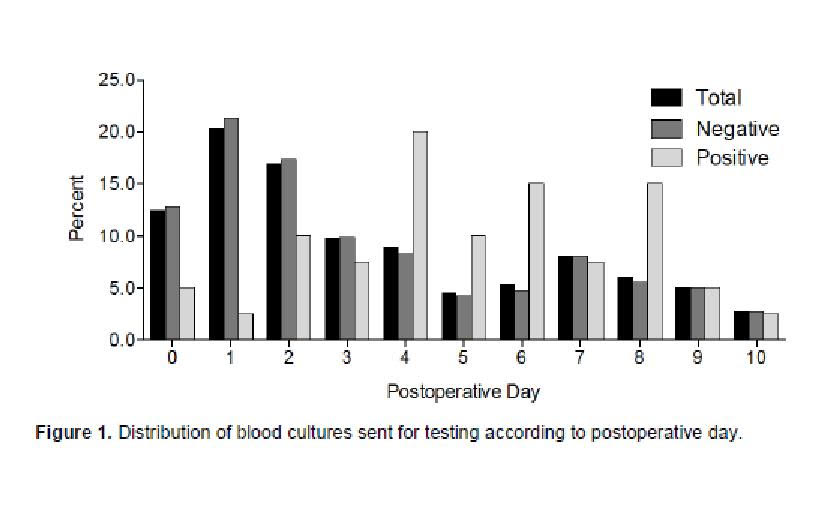L. R. Copeland-Halperin1, H. Prentice1, J. Dort1 1Inova Fairfax Hospital,Surgery,Falls Church, VA, USA
Introduction: Postoperative bacteremia is a common complication of surgery. Traditional teaching holds that fever beyond the fourth postoperative day (POD #4) warrants blood culture, yet supportive evidence is scant. We gathered data from patients with postoperative blood cultures to assess whether the POD on which a maximum temperature (Tmax) occurred predicted positive culture results.
Methods: We reviewed records at a large tertiary care hospital in Northern Virginia of all non-pregnant adult patients who had blood cultures drawn within the first 10 days after surgical procedures in 2013. Differences in culture yield in relation to the POD on which fever occurred were assessed using Fisher’s exact test.
Results: There were 5,418 blood cultures in 1,693 patients. Preliminary results based on 808 cultures from 306 patients (mean age 61.8 years, 51.9% women) identified 51 (6.3%) with organisms. Of these, 40 (4.9%) identified potential pathogens, while 11 were likely contaminants. The Tmax (mean 100.3°F, range 94.5°F-104.1°F) prompting the greatest number of blood cultures occurred on POD #1 (n=162; 20.3%), but only 1 culture on this day was actually positive (0.6%) (Figure 1). The Tmax most frequently associated with positive cultures (14.3%) occurred on POD #6. Most positive cultures (75.0%) were drawn when Tmax occurred on POD #4 or later (p <0.001).
Conclusion: The POD on which Tmax prompted blood cultures varied widely, and the overall yield of cultures was low. Pathogens were more often identified when Tmax occurred on POD #4 of later. Considering the yield and value of blood cultures, more judicious use of this resource could reduce the cost of postoperative care. Analysis of the complete dataset may identify other clinical predictors of pathogenic blood culture results and promote more efficient resource utilization.
